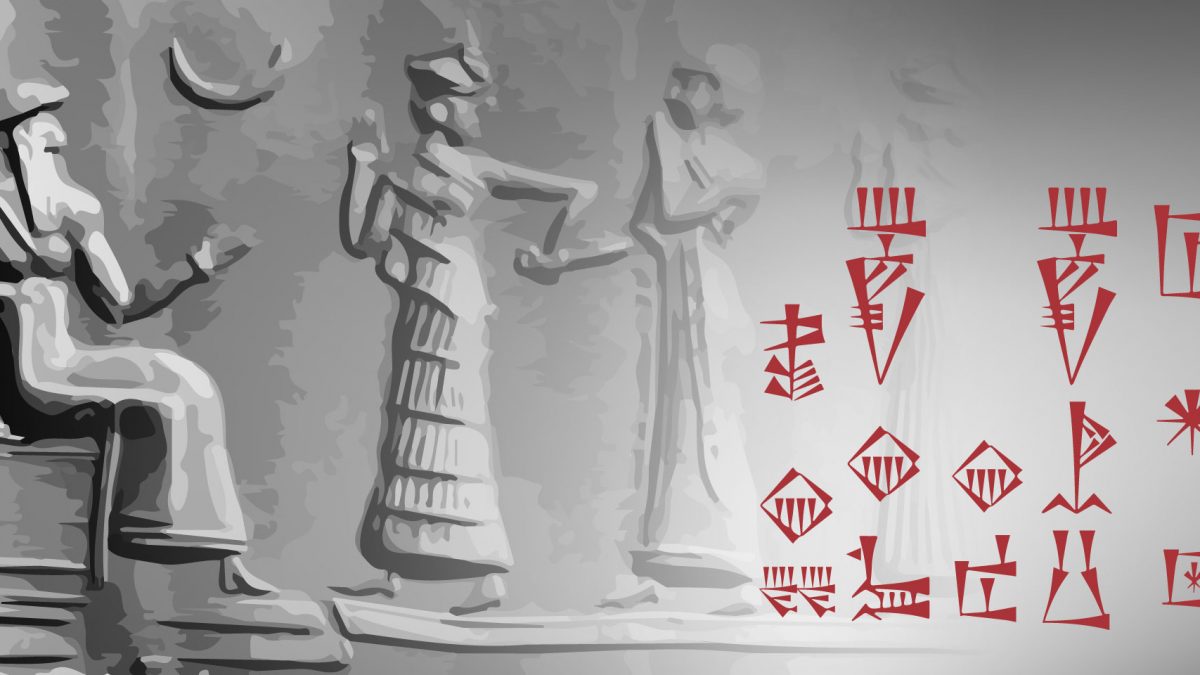#historyoflaw://
Ur-Nammu Law Code


In this Blog, we will begin a series of texts on law codes brought through history, without any pretensions to investigate these subjects to deep.
As in many other social relations and spheres of life, when it is about pioneer work of man, each of these codes represents a beacon which the later ones naturally followed.
It is right then to start this topic with the first and the oldest code known to man and that is Ur-Nammu Law Code, written in cuneiform and which presents a breakthrough in codification of law through history.
It has been brought by Sumerian ruler Ur-Nammu in 2050 BC, founder of the III dynasty of Ur which ruled Mesopotamia in the period from 2047 – 1750 BC. This period is also known as Sumerian renaissance because of cultural, economic and military bloom, firstly of the city of Ur, in which the mentioned Law Code has been brought, and later of whole Mesopotamia.
Today are salvaged only few remnants of the Code in the form of clay tablets and are exposed in the Louvres Museum in Paris. Only a part of prologue, certain articles and some fragments on which are the curses written towards the ones who try in any way to remove the Code have been preserved.
In 1952 the Code has been translated by Samuel Noah Kramer, a leading expert for Sumerian language and civilization, who managed to compile, from the salvaged parts, 22 different fragments into first complete issue, which has been published by the University of Chicago, under the title: „Lamentatio over the destruction of Ur“.
Content of the Code
In original text, the Code had a total of 57 segments – articles, divided into two parts.
In the prologue, a divine origin of the Code is pointed out and it began with the universal premise that people and the law originate from gods, and the king is simply the administrator of those laws. Harsh punishments in the provisions have been deemed unnecessary for most crimes because, as it was thought, people know how to treat each other so a fine has been enough, as the reminder of the rules of conduct.
For these reasons it may rather be called a Codex than a Code, especially when it is known that the Code also regulated the subjects that are not legal today, such as certain esoteric questions, witchcraft etc.
The first part of the Code regulated the sex morale, adultery of a woman, raping, murder, robbery and burglary where harsh penalties have been prescribed, including death sentence and physical punishment.In the case of adultery only one of the perpetrators would be punished, depending on each single situation – if a man would tarnish the honor of a virgin, engaged or a married wife, he would be executed. In the case when someone’s wife would „go after another man“, she would be executed. Therefore, penal provisions referred to, more or less, serious crimes which some of them are still being severely punished even today, excluding, of course, adultery and a few more.
For other offenses the punishment was so called „silver penalty“, unlike latter Codes such as Hammurabi Code, made three centuries later, which contained harsh penal provisions like the principle “eye for an eye, tooth for a tooth’’ and so on.
In that regard, if a man knocks out a tooth of another man, he was obliged to pay to the damaged two shekels of silver, hence the name „silver penalty“. Somewhat harsher penalty was for kidnapping, where if a man carries out the kidnap, he would be imprisoned and would have to pay 15 shekels of silver.
In second part of the Code, we have defined provisions which mostly referred to institute of God’s judgment. It was an unusual proof because the defendant would be drowned into water, and if he survives he would be “cleansed from false accusation”, so not guilty and he had to be paid a certain amount of silver as compensation for false accusation and trauma he survived. If he does not live, he was guilty. Introduction of this institute was of significant value because it became generally accepted in almost all later Codes of the Old world.
Class society, civil and criminal matter
Ur-Nammu Code, besides criminal, also regulated civil matters, in fragmentary way though. Also, the Code defined a class society – there were three social layers of different legal status. On top was the king (Sumerian: lugal – great man), below him were free folks (Sumerian: lu), and at the bottom were male (arad) and female slaves (gemas).
Specificness of the Code is reflected in remarkable legal technique of normative regulation, in sanctions which were mostly fine penalties, organization of class society, as well as in privileges of men over women. Namely, at that time woman didn’t have huge rights and countries were usually patriarchal, therefore the man was main pillar of society and family and for that reason he was entitled to higher level of legal protection.
All above mentioned resembles significant value and modernity of Ur-Nammu Law Code, which speaks in favor of it the fact that it covered both civil and criminal matter. Therefore, he presented great starting ground for further development of civilization, rule of Ur-Nammu was peaceful and was marked by the flourishing of Mesopotamia, which, evidently, reflected on legislation of that time.
Evolution of legislation in regard to abovementioned Code as the starting point today is unquestionable, and law and norms are a „live matter“ which are in constant change and transformation in search of reorganization of old social relations or simply organization of new social relations which did not exist until then.


